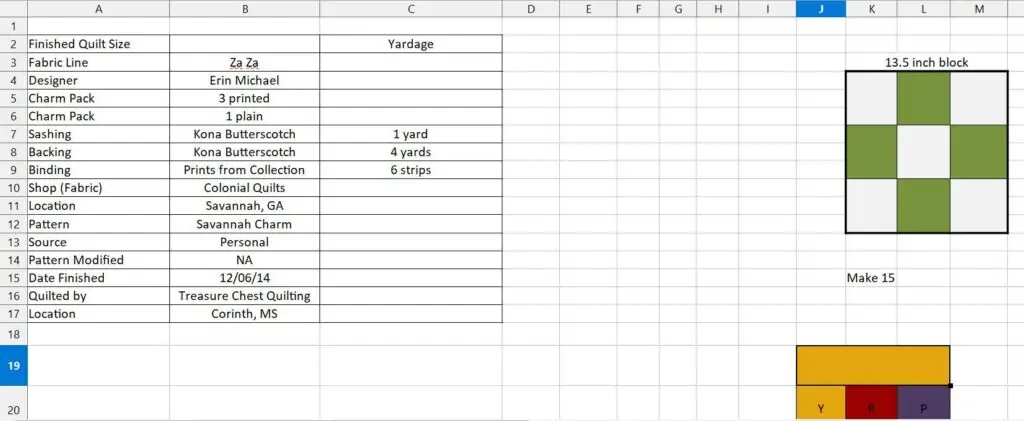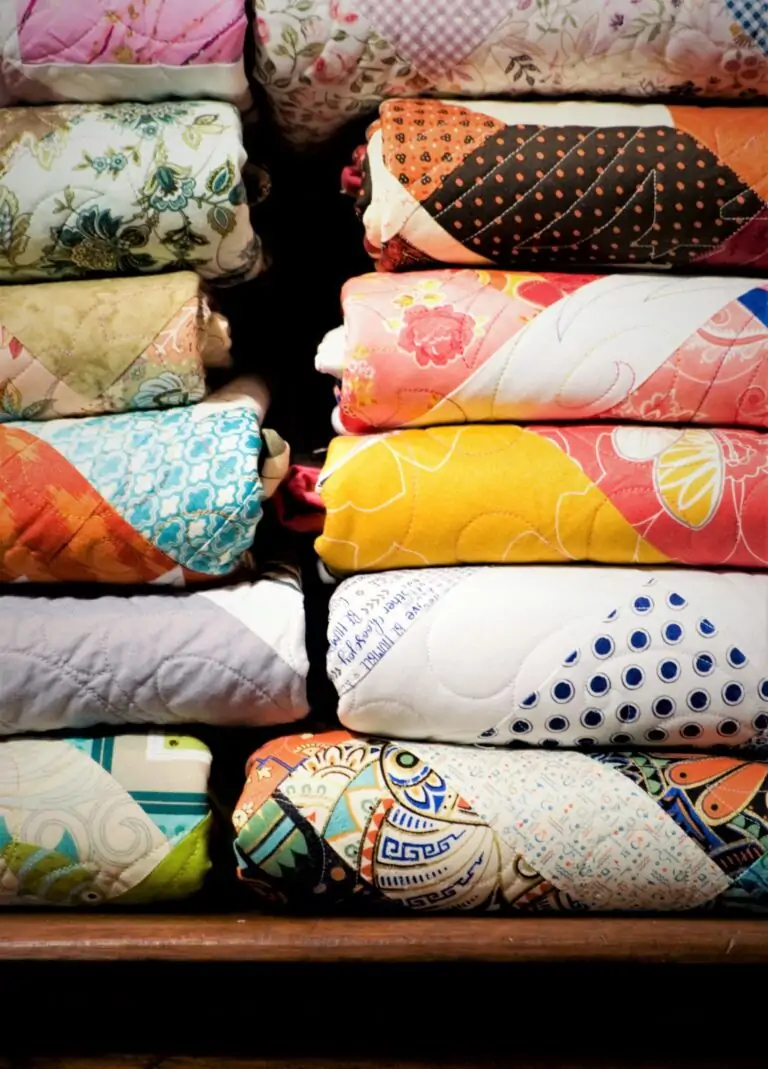The Anatomy of a Quilt Journal
Do you keep a quilt journal? I do. It’s not what you might envision though. Mine is electronic. There are so many cute quilt journals out there to purchase. Not to mention all the great ideas for creating your own using an art sketchbook. So many beautiful journals meant to capture creativity. So, why do I use something as ‘cold’ as an electronic journal?
WHY AN ELECTRONIC QUILT JOURNAL?
Well, I spent 14 years traveling as a computer software consultant. During that time I learned to rely more and more on the laptop that was always with me. Carrying paper planners and journals just doesn’t work when you’re trying to limit what you carry onto a plane. So, I kept a USB device to hold personal information like a quilt journal.
The journal began as an Excel notebook. Nothing fancy. It was just a way to keep all the information about a quilt in one place. Then, it grew into more of a design journal. I’ve tweaked it many times, added graphics, pasted pictures from my phone, and still I’m looking for ways to improve. I’ve grabbed pictures off the internet of the fabric I used and pasted them into the spreadsheet. I’ve also added a link to a free pattern here and there. Oh, and don’t forget the picture of the finished quilt 🙂

WHY I LOVE MY QUILT JOURNAL
- It is portable. Very portable. We’re talking fit-in-a-pocket portable.
- I can search for information using Ctrl + F (unlike paging through a book)
- I’ve recently started using Google sheets. Now I can access it from any computer anywhere (no USB key required)
- I can always print; because sometimes I just like to have a piece of paper to scribble on
- No messy handwriting; mistakes are easily deleted
- I can save pictures of the fabric, pattern, articles, etc. No more searching for the magazine with the beautiful pattern I saw.
WHAT YOU MIGHT NOT LOVE
- You can’t paste real fabric swatches into an electronic journal
- Sketching accurately in an electronic journal is not really possible
- It’s not a book and if you love books, you know what I mean
QUILT INFORMATION TO TRACK
So, let’s say your’re ready to start a journal or tweak the one you already have. What information do you keep in a quilting journal?
- Finished Quilt Size
- Fabric line/Designer/Manufacturer
- Precuts or Yardage? How much?
- Fabric used for Backing and amount
- Fabric used for Binding and amount
- Name of Quilt
- Date completed
- Anything else you think you might need some day
Now, you might think that the fabric used or the date completed doesn’t matter much. And, in truth it only matters when it matters, right?
For instance, I simply love the fabric lines I’ve used in my quilts. But, as you know, fabric lines are here one week and sold out the next. So, I started to concentrate on the designers of the fabric I love. Keeping a journal allows me to quickly find the designer name and research what other fabric lines he/she has recently released.
Next, let’s say I liked the color I used for a quilt backing and it would be perfect for my new project. Have you ever tried to match a swatch from the manufacturer to the fabric in your quilt? Not easy. My eyes play tricks on me depending on the light. However, if I put the manufacturer and color in a journal, I know exactly what I need.
Oh, and I’m not consistent about adding labels. I do it when I get around to it. Memory fails me, but a spreadsheet does not. A spreadsheet shows me the exact fabric used and the date it was finished. I also have a name to put on the label.
If you don’t keep a journal, start one. Grab a sketchbook if you’d rather use a physical book. Start a spreadsheet if you like the advantages of something electronic. Just keep track of the quilts you make and all the information about them . . . you’ll be glad you did.


